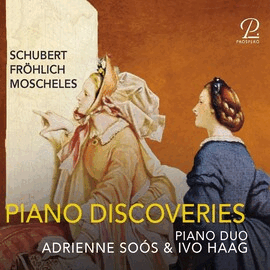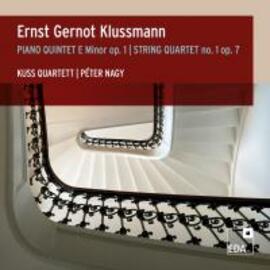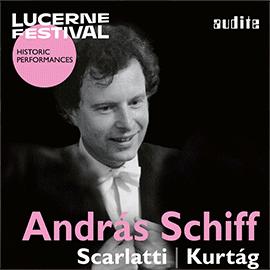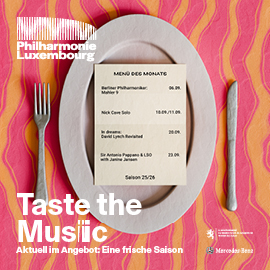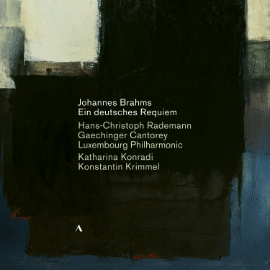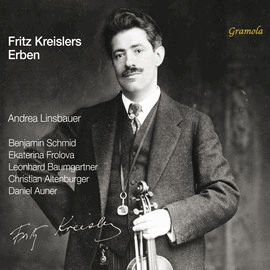Ernst Gernot Klussmann lebte von 1901 bis 1975. Ab 1933 war Klussmann Teil des gleichgeschalteten Nazi-Bildungssystems, ohne auf Parteilinie zu sein. Er unterrichtete zunächst in Köln und wurde 1942 Direktor des Hamburger Konservatoriums.
In den 1920er Jahren war seine Musik von der rechten Presse als entartet kritisiert worden, die geplante Uraufführung seiner 1. Symphonie in Dresden 1933 durch Bruno Walter kam wegen dessen Emigration nicht zustande. Seit ihrer Gründung 1950 leitete er als Vizedirektor gemeinsam mit Philipp Jarnach die Geschicke der Hamburger Hochschule für Musik und Theater (HfMT) als deren Vizepräsident bis zu seiner Emeritierung.
Die Klangsprache des Quintetts ist deutlich spätromantisch. Der erste Satz fließt wie der einer Brahms-Symphonie, wobei dieser Fluss in diesem Falle auf das zupackende Spiel der Interpreten zurückzuführen ist. Darauf folgt ein sehr wirklich schönes, einfühlsam gespieltes Adagio molto e cantabile, Musik zum Schwärmen. Ein auffallend kurzes und in seiner Wirkung mitunter etwas schräges Scherzo von knapp drei Minuten führt zu einem anfangs jubilierenden Finale, das aber schnell lyrisch-melancholisch wird, ehe das Klavier eine gut gelaunte Fuge anstimmt, die die Musik vorübergehend temperamentvoller werden lässt, doch gegen Schluss kommt sie meditativ und etwas düster fast zum Stillstand, bis eine Gaudeamus-Coda das Werk beendet.
Das fünf Jahre später beendete Quartett klingt viel moderner, von Spätromantik ist hier nichts mehr zu spüren. Klussmann bezieht die Farben in eine expressive Rhetorik ein, die von Stimmungswechseln und unterschiedlichen Rhythmen lebt. Das einleitende Adagio ist eher schwermütig, und der zweite Satz Allegro, könnte man als verspieltes Nachtstück ansehen. Danach kommen ein im 7/4 Takt humpelnder Marsch, eine düster-traurige, wie hoffnungslose Fantasia und schließlich ein spannendes Finale.
Das Kuss Quartett bewegt sich stilsicher und ausdrucksvoll durch die fünf Sätze mit ihre Stimmungswechseln und kann die Expressivität des Werkes in ihrer ganzen Dichte verdeutlichen. Die Interpretation hat Atem und Spannung, Dramatik und Intensität, vernachlässigt aber den Lyrismus einiger Passagen nicht.
Die Tonaufnahme ist direkt, präsent und ideal ausgewogen.
Ernst Gernot Klussmann lived from 1901 to 1975. From 1933 onwards, Klussmann was part of the Nazi education system, without toeing the party line. He initially taught in Cologne and became director of the Hamburg Conservatory in 1942.
In the 1920s, his music was criticized by the right-wing press as degenerate, and the planned premiere of his First Symphony in Dresden in 1933 by Bruno Walter did not take place due to the conductor’s emigration. From its foundation in 1950, he led the Hamburg University of Music and Drama (HfMT) as vice-director together with Philipp Jarnach, until his retirement.
The quintet is clearly late Romantic. The first movement flows like that of a Brahms symphony, although in this case this flow is due to the gripping playing of the performers. This is followed by a truly beautiful, sensitively played Adagio molto e cantabile – music to rave about. A conspicuously short and at times somewhat quirky scherzo of just under three minutes leads to an initially jubilant finale, which quickly turns lyrical and melancholy before the piano begins a good-humored fugue, which makes the music temporarily more spirited, but towards the end it almost comes to a meditative and somewhat sombre standstill until a Gaudeamus coda ends the work.
The quartet, completed five years later, sounds much more modern; there is no trace of late Romanticism here. Klussmann incorporates the colors into an expressive rhetoric that thrives on changes of mood and different rhythms. The introductory Adagio is rather melancholy, and the second movement, Allegro, could be considered a playful night piece. This is followed by a march limping in 7/4 time, a gloomy, sad and hopeless Fantasia and finally an exciting finale.
The Kuss Quartet moves through the five movements with all their changes of mood with stylistic confidence and expressiveness, and is able to bring out the expressiveness of the work in all its density. The interpretation has breath and tension, drama and intensity, but does not neglect the lyricism of some passages.
The recording is direct, present and ideally balanced.










